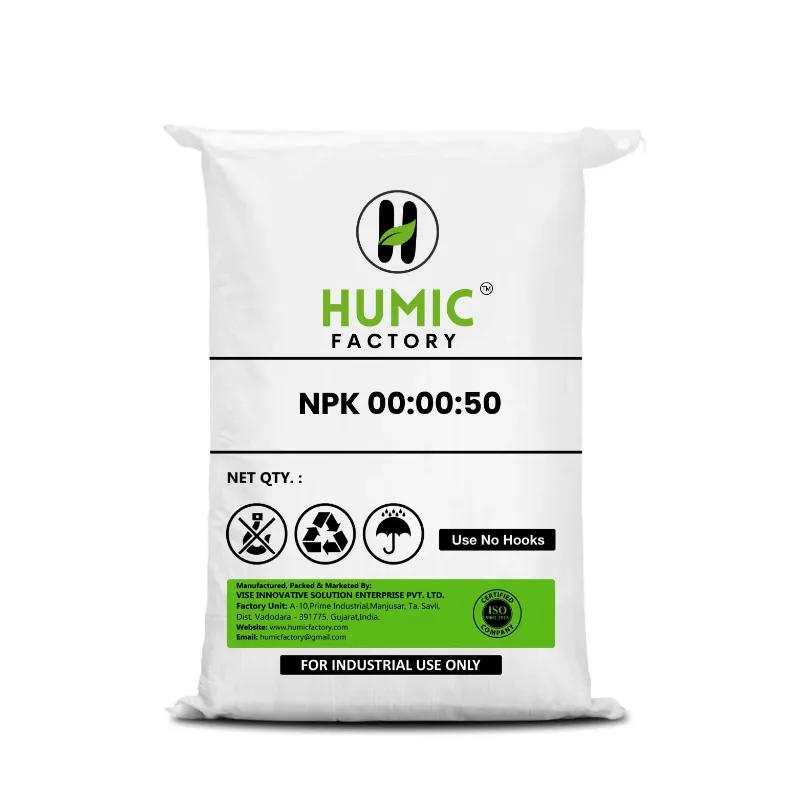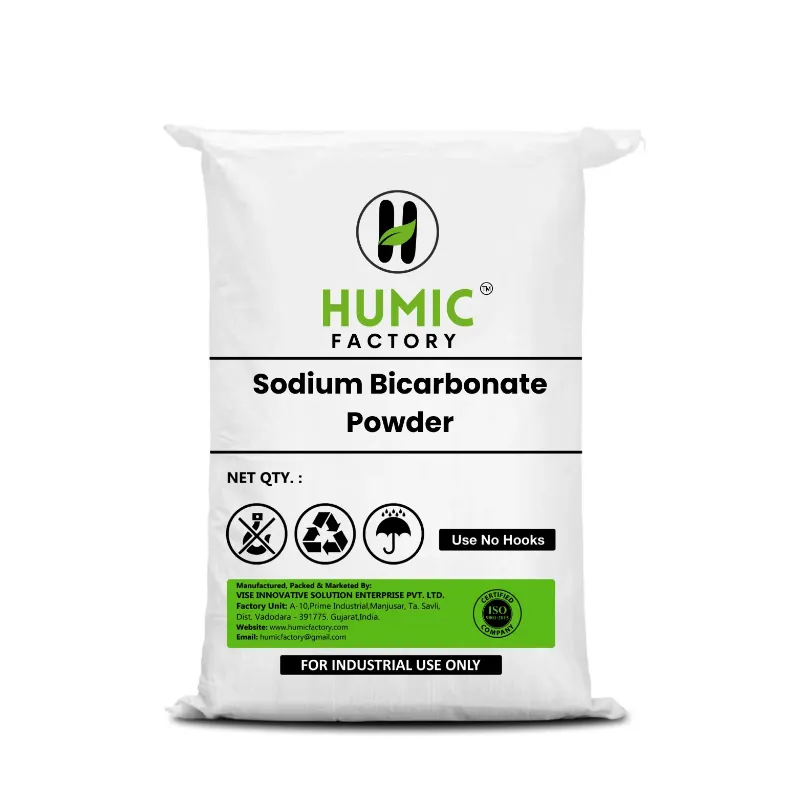In the realm of agriculture, soil health and crop productivity are intricately linked. As farmers seek sustainable methods to boost crop yields and enhance soil fertility, humic acid has emerged as a vital component in modern farming practices. Recognized for its ability to improve soil structure and stimulate plant growth, humic acid plays a crucial role in enhancing nutrient uptake in crops. This blog will delve into how humic acid contributes to better nutrient absorption, its impact on crop health, and how products from Humic Factory can support these processes. Humic acid is a complex organic compound derived from the decomposition of plant and animal matter over centuries. It is a key component of humus, the organic portion of soil that contributes to soil fertility. Humic acid is known for its dark color and its ability to improve soil properties, making it an essential ingredient in both organic and conventional farming. The benefits of humic acid extend beyond just improving soil structure; it significantly influences nutrient availability and uptake in crops. By interacting with soil minerals and plant roots, humic acid facilitates the transfer of nutrients from the soil to the plants, leading to healthier and more productive crops. Humic acid enhances nutrient uptake in crops through several mechanisms that involve both chemical and biological processes. Here’s how it works: One of the primary benefits of humic acid is its ability to improve soil structure. Humic acid binds soil particles together, creating a more porous and friable soil structure. This improved soil structure enhances aeration and water infiltration, which are critical for healthy root growth. With better soil aeration, roots can penetrate deeper into the soil, accessing a larger volume of nutrients and water. Additionally, improved soil structure prevents compaction, which can restrict root growth and reduce nutrient availability. By maintaining a healthy soil structure, humic acid ensures that crops have access to the nutrients they need for optimal growth. Chelation is a process where organic molecules bind to metal ions, making them more available for plant uptake. Humic acid acts as a natural chelating agent, binding with essential nutrients such as iron, zinc, magnesium, and calcium. These chelated nutrients are more soluble and easier for plants to absorb through their roots. By chelating nutrients, humic acid prevents them from becoming locked up in the soil, where they would otherwise be unavailable to plants. This process is particularly beneficial in soils with high pH levels, where nutrients like iron and zinc can become insoluble. Humic acid ensures that these nutrients remain available to crops, even in challenging soil conditions. Humic acid has been shown to stimulate root growth and development, which directly impacts nutrient uptake. It promotes the elongation of root cells and the formation of lateral roots and root hairs. These additional root structures increase the surface area available for nutrient absorption, allowing plants to take up more nutrients from the soil. Moreover, a more extensive root system enables plants to explore a larger soil volume, accessing nutrients that may be beyond the reach of shallow-rooted crops. This enhanced root development is particularly important in nutrient-poor soils, where plants must work harder to obtain the nutrients they need. Soil microorganisms play a vital role in nutrient cycling and availability. Humic acid serves as a food source for beneficial soil microbes, stimulating their activity and population growth. These microorganisms break down organic matter, release nutrients, and convert them into forms that plants can readily absorb. For example, nitrogen-fixing bacteria convert atmospheric nitrogen into ammonium, a form that plants can use. Phosphate-solubilizing bacteria release phosphate ions from insoluble compounds, making them available to plant roots. By enhancing microbial activity, humic acid indirectly improves nutrient uptake by ensuring that essential nutrients are continuously supplied to crops. Cation Exchange Capacity (CEC) is a measure of a soil’s ability to hold and exchange positively charged ions (cations) such as calcium, magnesium, and potassium. Soils with a high CEC can retain more nutrients and make them available to plants over time. Humic acid increases the CEC of soil, allowing it to hold onto essential nutrients and release them as plants need them. With a higher CEC, soils treated with humic acid are less likely to experience nutrient leaching, where nutrients are washed away by water before plants can absorb them. This results in more efficient nutrient use and reduces the need for frequent fertilizer applications. Soil pH plays a critical role in nutrient availability. If the soil is too acidic or too alkaline, certain nutrients become less available to plants. Humic acid helps buffer soil pH, bringing it closer to neutral, which is ideal for nutrient uptake. In acidic soils, humic acid can reduce the solubility of toxic elements like aluminum, which can inhibit root growth and nutrient absorption. In alkaline soils, it can increase the availability of micronutrients like iron and zinc, which are often deficient. By balancing soil pH, humic acid creates an environment where plants can absorb a wider range of nutrients more effectively. Humic Factory offers a range of humic acid-based products designed to enhance soil health and improve nutrient uptake in crops. These products are formulated to maximize the benefits of humic acid, providing farmers with a reliable solution for sustainable crop production. 1. Humic Acid Granules 2. Liquid Humic Acid Concentrate 3. Humic Acid-Based Biofertilizers Humic Factory’s products are designed to work in harmony with the natural processes in the soil, ensuring that nutrients are efficiently absorbed by plants. By incorporating these products into their farming practices, farmers can expect to see improvements in crop health, yield, and overall soil fertility. Humic acid plays a pivotal role in enhancing nutrient uptake in crops, contributing to improved soil fertility, healthier plants, and higher agricultural productivity. Its ability to improve soil structure, chelate nutrients, stimulate root growth, and enhance microbial activity makes it an invaluable tool for sustainable farming. Humic Factory’s range of humic acid-based products offers farmers a reliable solution to improve nutrient uptake and support sustainable agriculture. By integrating these products into their farming practices, farmers can achieve better crop yields, reduce input costs, and contribute to environmental sustainability. As the agricultural industry continues to face challenges such as soil degradation and nutrient depletion, humic acid provides a natural and effective solution to enhance soil health and ensure the long-term viability of farming systems. Whether you are a conventional farmer looking to reduce chemical inputs or an organic farmer seeking to boost soil fertility, humic acid from Humic Factory can help you achieve your goals.Understanding Humic Acid and Its Importance
How Humic Acid Enhances Nutrient Uptake
1. Improving Soil Structure and Aeration
2. Chelation of Nutrients
3. Stimulating Root Growth and Development
4. Enhancing Microbial Activity in the Soil
5. Increasing Cation Exchange Capacity (CEC)
6. Balancing Soil pH
Humic Factory’s Products and Their Role in Enhancing Nutrient Uptake
These granules are easy to apply and are designed to release humic acid slowly over time, providing a consistent supply of nutrients to plants. They improve soil structure, increase water retention, and enhance nutrient availability, making them ideal for a wide range of crops.
This liquid concentrate can be applied directly to the soil or used as a foliar spray. It is particularly effective in chelating nutrients and enhancing their uptake by plants. The concentrate can be easily mixed with water and applied through irrigation systems, ensuring uniform distribution and maximum effectiveness.
These biofertilizers combine the benefits of humic acid with beneficial microorganisms that further enhance nutrient uptake and soil health. They are ideal for organic farming practices and can help reduce the need for chemical fertilizers.Conclusion


Submit your contact number to receive exclusive updates
Something went Wrong Please try again!!!
Bulk Purchase
Get Bulk Discount
Get Discount Code now
फोन नंबर सबमिट करे और ऑफर पाए
We believe farming is hard. This is our attempt to support farmers. Submit your contact details to receive a discount and other offers from Humic Factory.

Recommended Products
COPYRIGHT © 2024. All Rights Reserved By Humic Factory


